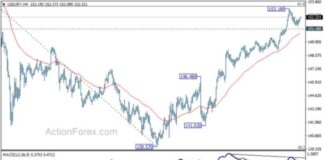On Thursday, S&P Global released preliminary estimates for the October PMI across major regions. In Europe, this data holds significant importance as it tends to impact market trends.
The data from Europe showed a mixed picture, with a focus on the stronger-than-expected numbers from Germany. In France, the services sector saw a deeper decline following a boost from the Olympics. The services index dropped to 48.3 from 49.6, hitting its lowest point since the end of last year. Additionally, the manufacturing PMI remained in contraction territory at 44.5, staying below 50 for the second consecutive month. The composite index also fell to a nine-month low of 47.3.
However, the estimates for Germany shifted the trajectory of the euro, surpassing forecasts by a significant margin. The services index rose to 51.4 after four months of decline, while the manufacturing PMI increased from 40.6 to 42.6, exceeding the expected 40.7. This rebound provided some reassurance as German manufacturing, as measured by the PMI, had been in contraction territory since July 2022. Consequently, the composite index stood at 48.4 in October, remaining below the 50 mark for the past four months.
Following the release, investors and traders noted the slight turnaround in the German PMIs towards growth, leading to a 0.35% jump in the EUR/USD. However, the single currency faced resistance in breaking above the 1.08 level in the short term.
The PMI data for the entire Eurozone surpassed expectations in the manufacturing sector, with the index reaching a five-month high of 45.9. Meanwhile, there was a slight uptick in growth in the services sector as the composite index rose from 48.9 to 49.7, still in contraction territory.
The better-than-expected German data helped the euro halt its decline. This improvement might pave the way for a corrective bounce in EURUSD after its continuous struggles since the end of September. Nevertheless, the modest improvement is unlikely to alter the European Central Bank’s dovish stance on interest rates in the upcoming weeks. The central bank is still anticipated to actively consider rate cuts.
In conclusion, the Eurozone PMI data has played a crucial role in influencing the trends in the currency market, particularly with the focus on the stronger performance in Germany. The slight positive momentum may offer some relief for the euro, but the overall economic outlook and ECB’s policy direction remain key factors to watch in the coming days.

















